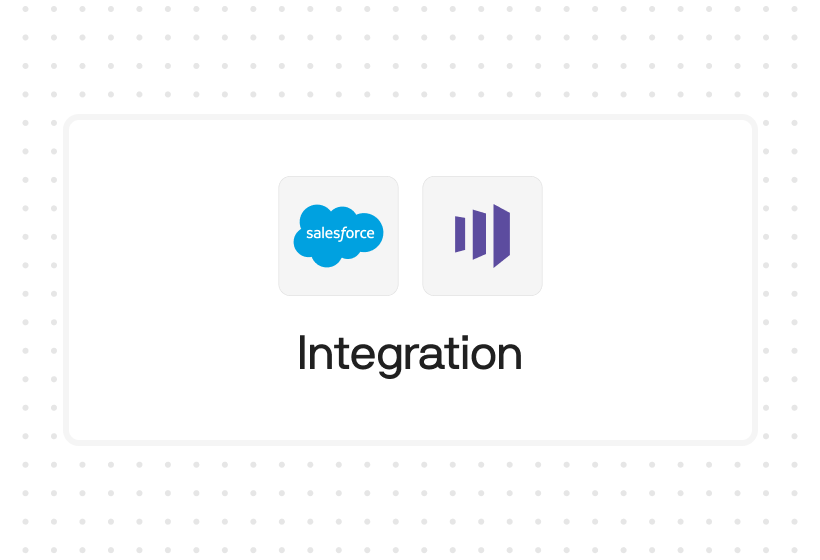Try Default

See how revenue teams automate revenue operations with Default.

Key Takeaways
Every GTM function has to justify its own existence—whether to executives, founders, or investors. As a relatively new function, it’s doubly important to track the ROI of RevOps.
Unfortunately, there’s often so much data that it’s difficult to identify and retrieve the most relevant information. This article will give you a framework for contextualizing and tracking those metrics. So the next time someone asks if RevOps is worth the investment, it’s a no-brainer.
The challenge with tracking the ROI of RevOps
At a high level, it seems like it would be easy to justify RevOps’ existence. Consider that organizations who invest in RevOps achieve the following results:
- 300% acceleration in revenue growth (Forrester)
- 100-200% increase in ROI and 10-20% increase in sales productivity (Boston Consulting Group)
- 209% increase in marketing-sourced revenue (HubSpot)
- 38% increase in sales win rates (HubSpot)
These stats speak to the importance of RevOps broadly. What they don’t show—and where the responsibility falls on you—is how your organization is specifically realizing an ROI from your RevOps efforts. Here are some specific reasons this can be a challenge.
Data noise
The good news is that aligning marketing, sales, and success makes it easier to retrieve all sorts of data. But there’s a dark side to this. Namely, it can often create noise that obscures the most relevant insights.
As such, data creation and access is only half the battle. You also need a means of identifying and surfacing insights from that data. This means your RevOps platform is just as important as the data itself.
Although it’s a decade-old, Daniel Weisburg’s article for Google titled From data to insights: The blueprint for your business still holds up. His four-fold question of context, need, vision, and outcome still provides the best way for all functions—including RevOps—to think about what data they need to surface to best demonstrate their ROI. More on that below.
Linking data to outcomes
Even after you sift through your data to identify specific metrics to track, there are dozens (if not hundreds) of RevOps KPIs you could be tracking. Not all of them tie explicitly to revenue. Not all of them are relevant to revenue. You need a way to link that data to specific outcomes.
This is part of a broader trend that expands beyond just RevOps. According to Ramke Ramakrishnan, VP Analyst at Gartner, “[Data] leaders must demonstrate their value to the organization by linking the capabilities they are developing and the work they do to achieve the business outcomes required by the organization. If this is not done, issues such as misallocation of resources and underutilized investments will continue to escalate.”
Driving action from data
Tracking the ROI of RevOps can go beyond just justifying your own existence. It’s also a powerful tool for identifying where you need to take action to further increase your ROI. Unfortunately, too many RevOps tech stack are so siloed that moving from insight to action is easier said than done.
Data company Coefficient faced this exact problem, with their siloed tech stack requiring excessive manual action from their RevOps teams. As such, they were missing opportunities to increase their RevOps performance and ROI. After switching to Default’s unified RevOps platform, they decreased their non-booking rate by 200-400% and built an overall more efficient lead management process.
External dependencies
When RevOps teams use an inefficient platform, often they become dependent on engineers and external vendors to access, analyze, and act on relevant data. OpenPhone faced this problem before switching from Chili Piper to Default. By ripping and replacing old processes from previous vendors, OpenPhone quickly leveraged Default to become “one source of truth with no place for errors.”
All four of these challenges illustrate that tracking the ROI of RevOps is a two-fold challenge. First is capturing, integrating, and correlating the right data. Second is investing in a platform that enables you to retrieve and act on the most critical insights from that data. Without the second, the first won’t help.
How to tell the best story with your RevOps data
Tracking the ROI of RevOps—especially in a way that will convince stakeholders—is about more than throwing together a list of metrics. It’s about telling the best story with that data. Weisburg’s fourfold framework provides a great model for doing just that. This is why it's crucial your RevOPs tech stack is done properly.
Context: Identify business goals & stakeholder expectations
Before you identify the KPIs that will best indicate the ROI of RevOps, you need to define the context within which they will be received. This context generally falls into two categories: business goals (objective) and stakeholder expectations (subjective).
Business goals are the objective standard against which you measure all other performance. RevOps’s primary goal is revenue generation, but your organization may have additional priorities: cost reduction, efficient resource use, team alignment, employee experience, etc.
But every organization has subjective stakeholder expectations that, like it or not, dictate how your performance data is interpreted. That’s why it’s critical to understand how your stakeholders think about ROI. Are they more interested in seeing immediate revenue growth, or cost savings and increased efficiencies? How much stock do they put in revenue forecasting? How much granular detail will they want to know?
Placing RevOps ROI expectations in the proper context can help you identify the highest priority insights contained within the mountains of data at your disposal.
Need: Correlate high-impact metrics with revenue growth or savings
Once you’ve defined your context, you need to drill down to a more specific need. Weisburg writes: “What specific needs could be addressed by intelligently using data? What will this project accomplish that was impossible before?”
RevOps allows you to track both leading and lagging indicators of revenue that are impossible with a fragmented, siloed approach. But unless you correlate those either revenue growth or savings, you won’t be able to tell that story.
To distinguish RevOps’s contribution from, say, an exceptional salesperson’s performance, you need to zoom out and correlate RevOps-specific activities with greater revenue growth. Here are some examples;
- Reducing inefficiencies in performance and improving overall revenue team productivity
- Increasing forecasting accuracy to allow for more impactful strategic decisioning
- Quantifying marketing successes by more directly connecting top-of-funnel outcomes with the bottom
- Identifying a customer’s true LTV by expanding revenue tracking across the entire customer lifecycle
- Justifying high-margin campaigns (e.g. ABX, brand marketing, premium events) by correlating spend with a holistic picture of customer revenue
Vision: Assign specific processes & workflows
Now, take those correlations you just made, and start mapping out the specific process and workflow logic that will bring them to fruition. This step is crucial, because unless you know exactly how each component contributes to the larger whole, you won’t know what to fix or adjust when, as always happens, reality bumps up against expectations.
I’ll break this down with an example. Let’s say one of RevOps’ mandates is to decrease marketing-to-sales lead dropoff. If there’s no noticeable change within 90 days, the RevOps team will be in trouble.
But marketing-to-sales handoff is itself a complicated, multifaceted process. Here are just a few elements involved:
- Defining a lead’s path from conversion to qualification, and then to routing, scheduling, and nurture
- Incorporating sales-qualified lead (SQL) standards into marketing-qualified lead (MQL) standards to increase odds of qualified handoff. See our guide on mql vs sql frameworks.
- Timing sales followup to qualified leads to increase the chances of a callback
- Identifying which function is responsible if a lead fails to book or close and addressing the performance issue
- Integrating individual tech stack components for each step of the journey (e.g. conversion, routing, scheduling, followup) to avoid a fragmented, brittle experience
Without defining how each of these components specifically contributes to lead dropoff, you can’t define whether RevOps is impacting that KPI (positively or negatively).
Outcome: Track actual alignment with goals and forecasts
The final stage of tracking the ROI of RevOps comes after you start executing. The previous three stages are purely theoretical. But we all know that expectations and reality are never in 100% alignment.
Failure to meet your KPIs doesn’t necessarily mean RevOps isn’t delivering an ROI. Rather, it means your assumptions and framework for tracking RevOps ROI is flawed. The solution isn’t to throw out all of RevOps, but adjust your framework to better align with the reality on the ground.
If you’ve taken the time to map out exactly how each RevOps function contributes to your broader metrics and business goals, this should be a straightforward process. Continuing with the lead dropoff example, you may discover that leads are booking an initial discovery call, but are dropping off after that. One potential problem is that you’re routing leads to the wrong reps, resulting in lower quality—and lower converting—conversations.
By continually comparing goals and forecasts with actual engagement, you can find areas that either misrepresent RevOps performance, or areas where RevOps needs to make quick adjustments so you can meet your broader goals.
Which RevOps KPIs are most effective at demonstrating ROI?
As you can probably surmise based on the previous section, the specific RevOps KPIs that are most effective at tracking your ROI are going to vary widely by organization. So just putting together a generic checklist isn’t going to be all that helpful.
To further understand the unique contributions of RevOps, it may be helpful to compare its functions and KPIs with those of Sales Ops and Marketing Ops.
Exploring the distinctions and overlaps in RevOps vs sales Ops vs marketing ops can clarify why certain KPIs are more pertinent to RevOps and how these roles collectively drive organizational success.
What I can do is pick out a few examples of RevOps KPIs and metrics and show how you can use them to demonstrate overall ROI.
Check out our comprehensive list of RevOps KPIs and metrics here.
Weighted pipeline value & sales velocity
These leading indicators provide a holistic view of deal creation, sales effectiveness, and speed. Especially when you track them over time, they’re an excellent baseline indicator of RevOps’s ability to accelerate and grow revenue.
Pipeline forecasting
RevOps not only accelerates revenue, but can predict future revenue growth and provide a framework for strategic decisioning within the organization. Any of the following forecasting metrics can help justify RevOps’ existence:
- Pipeline predictability. By measuring weighted pipeline value and sales velocity against actual financials, this can be an indicator that RevOps’s insights are accurate and trustworthy.
- Pipeline coverage ratio. If RevOps can demonstrate they can cover sales quotas, it demonstrates their direct support of the broader revenue organizations goals. This can be especially powerful if the organization struggled to meet quota pre-RevOps implementation.
- Customer acquisition forecast. Especially if you have a long sales cycle, demonstrating an uptick in customer acquisition forecast can provide a leading indicator of RevOps effectiveness.
- Churn rate forecast. A reduction in customer churn shows that RevOps’ holistic approach to the entire customer journey not only keeps current customers engaged, but also attracts the kinds of customers that are likely to stick it out for the long haul.
Conversion rates
Part of RevOps’ value prop is the ability to drive more seamless integration among all stages of the customer journey. Tracking conversion rates is a sign that RevOps is effective in driving this outcome. What’s more, small increases at the top of the funnel can drive exponential growth at the bottom.
Here are some of the most impactful conversion rates to track:
- Visitor-to-Lead Conversion Rate
- Lead-to-Opportunity Conversion Rate
- Lead Qualification Rate
- Win Rate
- Free Trial Conversion Rate
- Upsell/Cross-sell Conversion Rate
- Renewal Rate
- Referral Conversion Rate
Marketing-sourced revenue
By managing the revenue process from start-to-finish, RevOps helps ensure marketing activities translate into revenue growth. Tracking marketing-sourced revenue is another indicator of positive RevOps ROI.
Make sure you’re not just looking at direct first-, multi-, or last-touch attribution. Because customer journeys aren’t linear—due to omnichannel touchpoints, double-backs, and complex buying units—marketing can also influence deals that are sourced from other channels.
Net Revenue Retention (NRR)
Another way RevOps contributes to the bottom line is engaging in post-sale engagement, helping to stave off the inevitable realities of churn. For example, a RevOps workflow can alert a salesperson when an existing customer views a product page for a product they’re not currently using.
Net Revenue Retention (NRR) is a good way to track that. It’s a formula that incorporates churn, upgrades, and downgrades to give a holistic perspective of retention. Anything above 100% is a great sign, but if RevOps can make incremental improvements to that figure, that’s a great indicator of their positive ROI.
Time spend on manual tasks
On the other side of the equation are time spent on manual tasks—data entry, note taking, meeting scheduling, follow-ups, etc. By replacing these activities with automations, RevOps teams can prove their ROI through cost savings.
Final thoughts on tracking the ROI of RevOps
The reality is that, according to Gartner, 75% of companies will have a RevOps function by next year. Soon enough, it’ll be a standard part of business operations, like marketing and sales and operations.
Until then, RevOps teams need to make their existence a no-brainer for business leaders. Even among friendly stakeholders who are bought into its value, proactively tracking the ROI of RevOps helps make that decision all the more easier.
And it’s even easier to implement everything I’ve said here when you have a centralized RevOps platform with all your data, workflows, and automations in one place.
Learn more about how Default helps RevOps teams not only prove their ROI, but increase it.
Conclusion

Former pro Olympic athlete turned growth marketer. Previously worked at Chili Piper and co-founded my own company before joining Default two years ago.
Run revenue as an engineered system
Revamp inbound with easier routing, actionable intent, and faster scheduling














.png)























